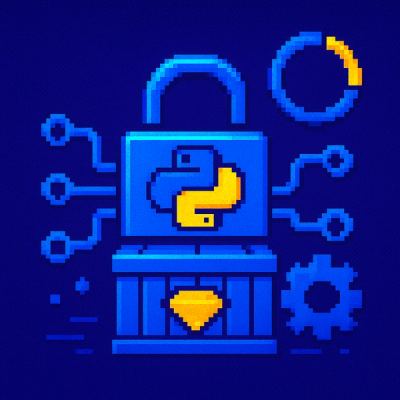
Security News
Another Round of TEA Protocol Spam Floods npm, But It’s Not a Worm
Recent coverage mislabels the latest TEA protocol spam as a worm. Here’s what’s actually happening.
auto-deep-learning
Advanced tools
Automation of the creation of the architecture of the neural network based on the input
auto_deep_learning: with this package, you will be able to create, train and deploy neural networks automatically based on the input that you provide.
This package is still on development, but Start the Project to know further updates in next days! For the moment, would be for computer vision classification tasks on images (multi-modal included).
Use the package manager pip to install auto_deep_learning.
To install the package:
pip install auto_deep_learning
If using an old version of the package, update it:
pip install --upgrade auto_deep_learning
The project structure is the following one:
├── auto_deep_learning # Python Package
│ ├── cloud # Cloud module for saving & service DL models
│ │ ├── aws # Amazon Web Services
│ │ └── gcp # Google Cloud
│ ├── enum # Enumerations for the model
│ ├── exceptions # Exceptions
│ │ ├── model # Exceptions related to the definition/creation of the model
│ │ └── utils # Exceptions related to the utilities folder
│ │ └── data_handler # Exceptions related to handling the data
│ ├── model # Module for creating & training the models
│ │ └── arch # Architectures supported of the models
│ │ └── convolution
│ ├── schemas # Schemas of expected outputs
│ └── utils # Utilities for the project
│ ├── data_handler # Utilities related to handling the data
│ │ ├── creator # Utilities related to creating the loaders
│ │ └── transform # Utilities related to the transformation of the data
│ └── model # Utilities related to the creation of the model
├── examples # Examples of how the package can be used
└── tests # Tests
How easy can be to create and train a deep learning model:
from auto_deep_learning import Model
from auto_deep_learning.utils import DataCreator, DataSampler, image_folder_convertion
df = image_folder_convertion()
data = DataCreator(df)
data_sampled = DatasetSampler(data)
model = Model(data_sampled)
model.fit()
model.predict('image.jpg')
We provide also with a configuration object, where it centralizes some of the most important configurations that you might want to do:
ConfigurationObject(
n_epochs: int = 10,
batch_size_train: int = 64,
batch_size_valid: int = 128,
batch_size_test: int = 128,
valid_size: float = 0.1,
test_size: float = 0.05,
image_size: int = 224,
num_workers: int = 6,
objective: ModelObjective = ModelObjective.THROUGHPUT,
img_transformers: Dict[str, ImageTransformer] = {
'train': ImageTransformer(
rotation=3.0,
color_jitter_brightness=3.0,
color_jitter_contrast=3.0,
color_jitter_hue=3.0,
color_jitter_saturation=3.0,
color_jitter_enabled=True,
resized_crop_enabled=True
),
'valid': ImageTransformer(),
'test': ImageTransformer()
}
)
So by default, it is going to do image augmentation on the training data. Note that if for example we did not want to make a validation split because our dataset is too small, we would change this value as:
conf_obj = ConfigurationObject()
conf_obj.valid_size = 0.0
The data that it expects is a pd.DataFrame(), where the columns are the following:
- image_path: the path to the image
- class1: the classification of the class nr. 1. For example: {t-shirt, glasses, ...}
- class2: the classification of the class nr. 2. For example: {summer, winter, ...}
- ...
- split_type: whether it is for train/valid/test
For better performance, it is suggested that the classes and the type are of dtype category in the pandas DataFrame. If the type is not provided in the dataframe, you should use the utils function of data_split_types (in utils.dataset.sampler file).
If instead you have the images ordered in the structure of ImageFolder, which is the following structure:
train/
class1_value/
1.jgp
2.jpg
...
class2_value/
3.jpg
4.jpg
...
test/
class1_value/
1.jgp
2.jpg
...
class2_value/
3.jpg
4.jpg
...
For simplifying logic, we have provided a logic that gives you the expected dataframe that we wanted, with the function of image_folder_convertion (in utils.functions), where it is expecting a path to the parent folder where the train/ and /test folders are.
FAQs
Automation of the creation of the architecture of the neural network based on the input
We found that auto-deep-learning demonstrated a healthy version release cadence and project activity because the last version was released less than a year ago. It has 1 open source maintainer collaborating on the project.
Did you know?

Socket for GitHub automatically highlights issues in each pull request and monitors the health of all your open source dependencies. Discover the contents of your packages and block harmful activity before you install or update your dependencies.

Security News
Recent coverage mislabels the latest TEA protocol spam as a worm. Here’s what’s actually happening.

Security News
PyPI adds Trusted Publishing support for GitLab Self-Managed as adoption reaches 25% of uploads

Research
/Security News
A malicious Chrome extension posing as an Ethereum wallet steals seed phrases by encoding them into Sui transactions, enabling full wallet takeover.